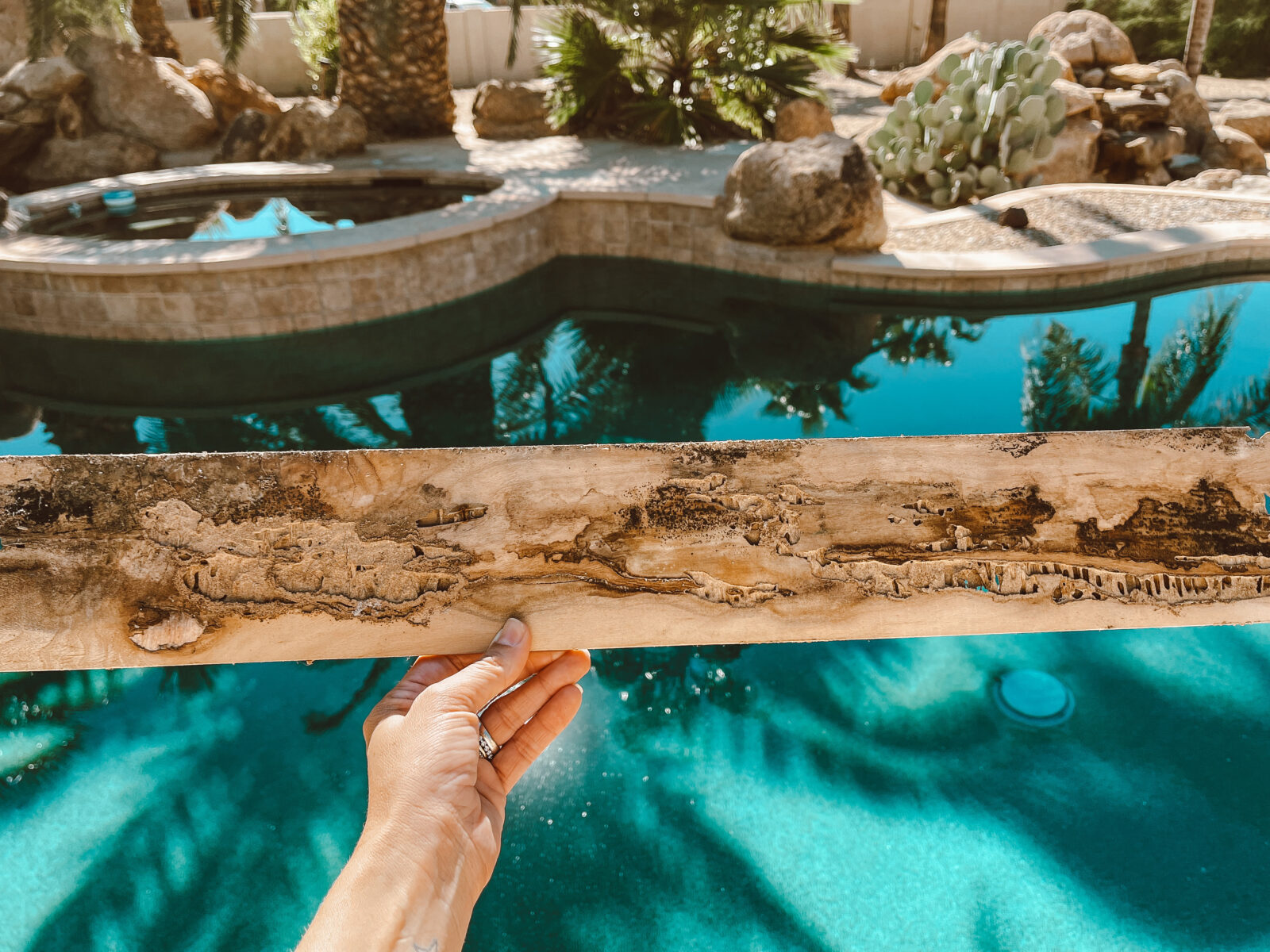So your house has termites but, you want to install wood floors: This is my current dilemma.
As a Realtor, I have been through hundreds of whole Home & Termite inspections. Inspectors can only inspect what is visible, not what is behind walls, baseboards, cabinetry, etc. Therefore, to my horror, after removing all the floors and baseboards of our new home, we uncovered the reality of the termite damage. The whole house has termites, new & old. Filled with panic, I scheduled a Termite Treatment immediately.
Me: Ok, so once you treat the house for termites, all will be good to install wood floors? Termite Technician: Absolutely F#cking Not. Me: Blinking, WHAT!? TT: I strongly discourage you from installing wood floors, especially with this amount of termite evidence. Me: But.. But.. I WANT them. It’s the ONE thing I am most excited about with this whole remodel! TT: Like the Terminator said, ‘I’LL BE BACK’ Termites. Will. Come. Back. even with this treatment. ME: (discouraged and stubborn) Well, the whole house is like 90% wood and builders still build with wood, so what’s more wood going to do? Besides, I’m not the first person to install wood floors in termite riddled Arizona. Narrator: Years later, Emily will have come to regret this decision… (or won’t she?).
In Arizona the saying is ‘You either have termites or you are going to get termites.’ So.. Question: If you can’t avoid them, how do you put up your best dukes in defense against them??
Answer: Whole home termite treatment. This is drilling into the foundations interior perimeter, the exterior of your homes foundation, stem walls, and any where there is a penetration in the foundation i.e. plumbing, wet areas (under sinks, bathtubs, showers), etc. and along any cracks in the slab, to spray termite killing chemicals. The whole home treatment is the best attempt to create a wall of defense at any & all vulnerable spots. Unfortunately, it’s never 100% guaranteed to kill them all.
When to treat for termites? During a renovation, the best time to do this is after you have demo’d your floors + baseboards, and you are down to the cement slab. The whole house should be drilled/treated prior to installing your new floors. You are more than likely going to have settling cracks in the foundation that will need to be addressed as well. These need to be drilled + treated, then sealed with a redguard sealant to keep the termites from getting into your house. The redguard sealant is waterproof and epoxy based, so if there is more movement in the foundation, it shouldn’t crack/reopen like concrete would. This is an extremely important step due to the fact that Subterranean Termites are incredibly small, and can worm their way into a crack thinner than a piece of paper.
Tip: Take photos of where the slab cracks are, especially cracks that go under walls. This is a opening for termites to get in and have a direct access to the wood in your house. Then, once the new floors go down, you can reference the photos for areas to keep an eye on/spot treat annually. Also, Make a file of where the termites were, so that you are checking on those areas, making sure that they don’t come back.
Now, my skin is crawling just writing this, but they are very, very tiny. However, they can do lots of damage. The average subterranean termite can eat 1 lb of wood in 1 year. Not a lot, but think of year over year, on a house that is 30 years old, it can really add up if you aren’t keeping up with annual treatments or spot treatments of active termite areas.
FYI: Wet seasons, and the heavy monsoons we just had in Arizona create the perfect conditions for the termites to be more active in hunting for wood. Be diligent, and hope that your neighbors aren’t, so the termites head for their home (I kid!). But what are you even looking for? No. 2 Pencil sized trails, sandy brown in color + texture ‘Mud Tubes’, Pin-hole sized openings in walls/ceilings, or tubes forming straight down out of your ceiling.
Not Fun Fact: Did you know you can have up to 20 different termite colonies within 1 acre of land? That’s 20 different Termite Queens. If the Queen is alive, the termites will thrive. If the Queen dies, the colony will die.
Best Advice: Plan to have termite treatment just after the flooring is removed from your house when doing a remodel. Or just in general, have a thorough termite inspection done when purchasing a home and plan for annual treatment, and set a monthly calendar reminder to go around your house and inspect for evidence of termites. The majority of Pest Control Companies will offer a 1 Year Termite Warranty, where they will come spot treat any new tubes in that year, as many times as needed.
So, will I regret putting in gorgeous Silver Oak wood floors in my house, as the Narrator suggests? Hopefully not. All I can do is stay on top of termite treatment. And, what if in 10 years, I am sitting on my oak sawdust floors crying? Well, there’s wine for that..
And don’t forget to Just Click Your Heels, Because There’s No Place Like HOME?❤️. Cheers?, Emily

